You’ll find that leading biometric sport watches use your heart rate variability and gait patterns as unbreakable authentication keys, protecting your performance data with AES-256 encryption and continuous physiological monitoring. These devices create tamper-resistant connections through dual biometric factors, preventing competitors from accessing your training metrics while maintaining real-time identity verification throughout workouts. Advanced AI algorithms detect unauthorized access attempts with 76% accuracy, safeguarding your competitive advantages through secure wireless transmission protocols that’ll transform how you protect your athletic investments.
Heart Rate Variability Authentication in Elite Training Environments
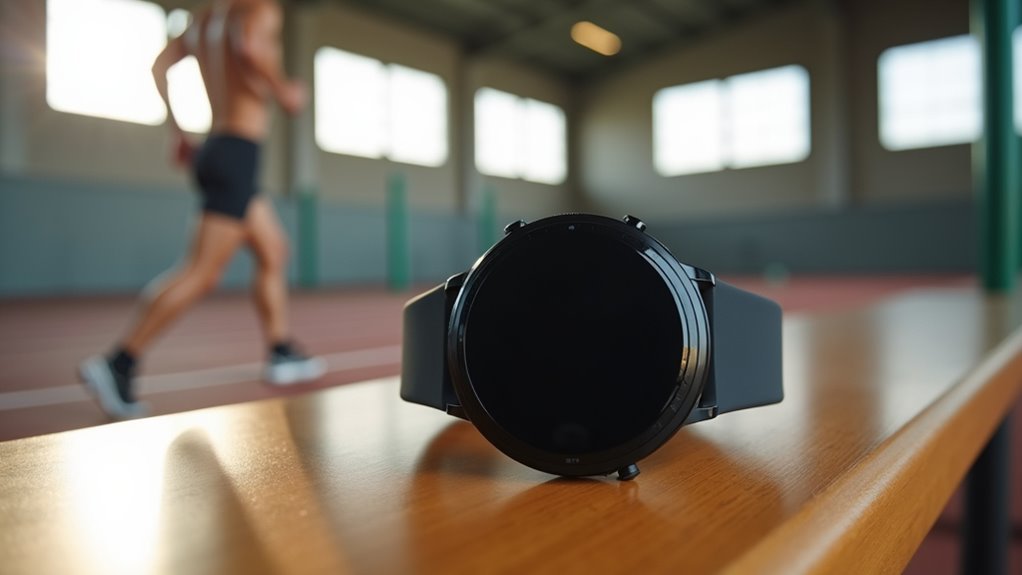
While traditional authentication methods rely on passwords or fingerprints, your heart’s unique rhythm patterns offer a revolutionary approach to securing athlete data in elite training environments.
HRV serves as distinctive biometric data that can identify you through consistent inter-beat interval patterns measured via R-R intervals on ECGs or smartphone apps with heart rate straps.
Your heart’s inter-beat intervals create unique biometric signatures detectable through ECG monitoring or smartphone heart rate applications.
Your HRV patterns remain sufficiently stable to function as reliable identifiers while varying enough to prevent replication.
In elite training facilities, this technology protects sensitive performance data, recovery metrics, and training optimization information from unauthorized access. The vagus nerve activity reflected in HRV measurements adds an additional layer of physiological authenticity that makes spoofing nearly impossible.
However, you’ll face significant legal and ethical considerations regarding data privacy when implementing HRV-based authentication systems.
Robust security measures and careful data analysis are essential for developing effective authentication protocols that safeguard your biometric information.
Gait Pattern Recognition for Secure Athlete Identity Verification
Beyond heart rhythm analysis, your walking patterns provide another powerful biometric identifier that’s revolutionizing athlete identity verification in sports facilities.
Gait recognition technology converts your step patterns into mathematical equations, creating unique signatures that can’t be easily imitated. Unlike fingerprint or iris scanning, this system operates at a distance without requiring direct interaction, making it ideal for sports environments.
Modern video-based systems achieve up to 94% accuracy rates using deep learning algorithms that analyze your silhouette and movement patterns. Your gait remains distinctive even when factors like fatigue or different footwear influence your stride.
This non-invasive method works seamlessly during training, providing secure authentication for accessing facilities, equipment, or personalized performance data while maintaining the flow of athletic activities. The technology operates on 24 unique parameters that define each individual’s walking pattern, making successful imitation extremely challenging even when someone attempts to replicate another person’s gait.
Biometric Data Encryption Protecting Professional Sports Analytics
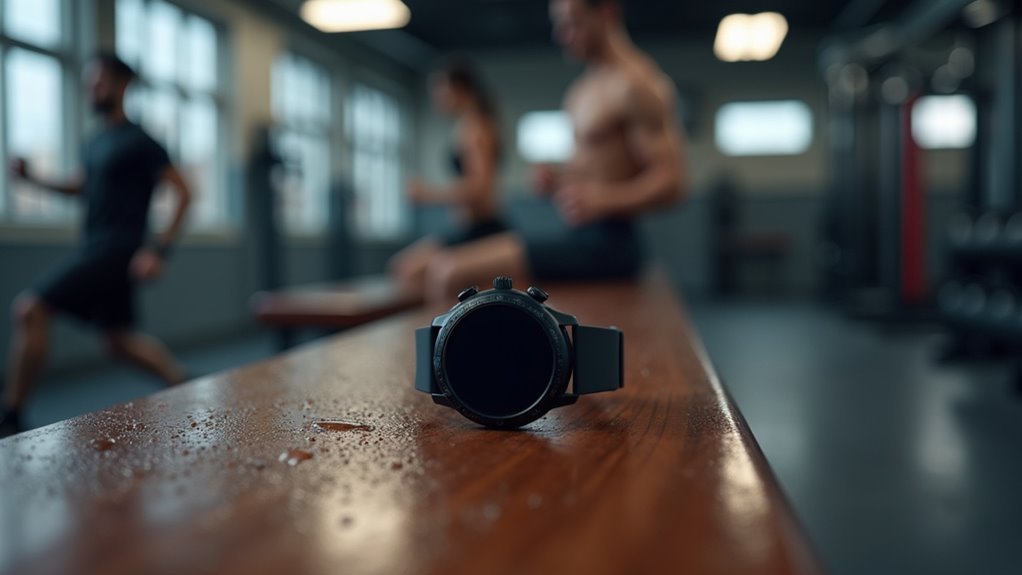
You’ll need Advanced Encryption Standards (AES) to protect your biometric data as it moves from your sport watch to team analytics systems.
Your personal performance metrics require the same level of data transmission security that banks use for financial transactions.
Privacy protection protocols guarantee you maintain control over who accesses your heart rate patterns, movement data, and other intimate biometric signatures. Professional sports leagues now implement explicit consent requirements before collecting any biometric information from athletes’ wearable devices.
Advanced Encryption Standards
As professional sports organizations collect increasingly sensitive biometric data from athletes, they’re turning to Advanced Encryption Standards (AES) to protect this valuable information from unauthorized access and potential misuse.
You’ll find AES particularly effective because it’s a symmetric encryption algorithm that secures biometric datasets on sport wearables, preventing unauthorized reading or modification of performance metrics.
When you implement AES in your sports analytics system, you can customize security strength using flexible key lengths of 128, 192, or 256 bits to match regulatory requirements.
Hardware-based AES encryption modules in biometric sport watches improve efficiency while reducing latency for real-time data streams. With collective bargaining agreements now addressing biometric data protection across major leagues like MLB, NFL, NBA, and NHL, encryption standards have become essential for compliance with player privacy requirements.
You’ll also benefit from AES optimization in NoSQL databases, ensuring secure storage and retrieval of sensor-generated data while encrypting information both at rest and in transit.
Data Transmission Security
While AES encryption provides strong protection for stored biometric data, securing the transmission of this sensitive information from athlete wearables to analytics platforms requires additional layers of defense against increasingly sophisticated cyber threats.
You’ll need multi-factor authentication protocols to strengthen identity verification when accessing biometric data streams. End-to-end encryption tailored for low-latency, high-volume data guarantees confidentiality during transmission to analytics platforms.
You should deploy hardware security modules within wearable devices to add tamper-resistant encryption key management.
Implementing blockchain technology creates immutable audit trails for data access and sharing. Real-time monitoring capabilities enable immediate detection of security breaches during biometric data transmission, allowing teams to respond instantly to potential threats. Cryptographic hash functions verify data integrity during transmission without exposing raw information, while digital signatures authenticate sources and prevent spoofing between athlete devices and analysis servers.
Privacy Protection Protocols
Professional athletes’ biometric data represents one of the most valuable and vulnerable digital assets in modern sports, requiring extensive privacy protection protocols that go beyond basic encryption to safeguard against identity theft, performance manipulation, and unauthorized commercialization.
You’ll need thorough protocols that include end-to-end encryption, robust access controls, and transparent consent mechanisms. Your biometric data demands AES-256 encryption standards with role-based permissions that restrict unauthorized access. Regular security audits guarantee your protection remains effective against evolving threats.
| Protection Layer | Implementation |
|---|---|
| Data Encryption | AES-256 algorithms with secure key management |
| Access Control | Multi-factor authentication and role-based permissions |
| Legal Compliance | GDPR/BIPA adherence with explicit athlete consent |
You retain ownership rights under regulations like GDPR, guaranteeing you can control how your biometric information is collected, stored, and monetized. The increasing use of implanted chips will further complicate data security as athletes adopt more advanced monitoring technologies.
Multi-Factor Authentication Combining Heart Rate and Movement Patterns
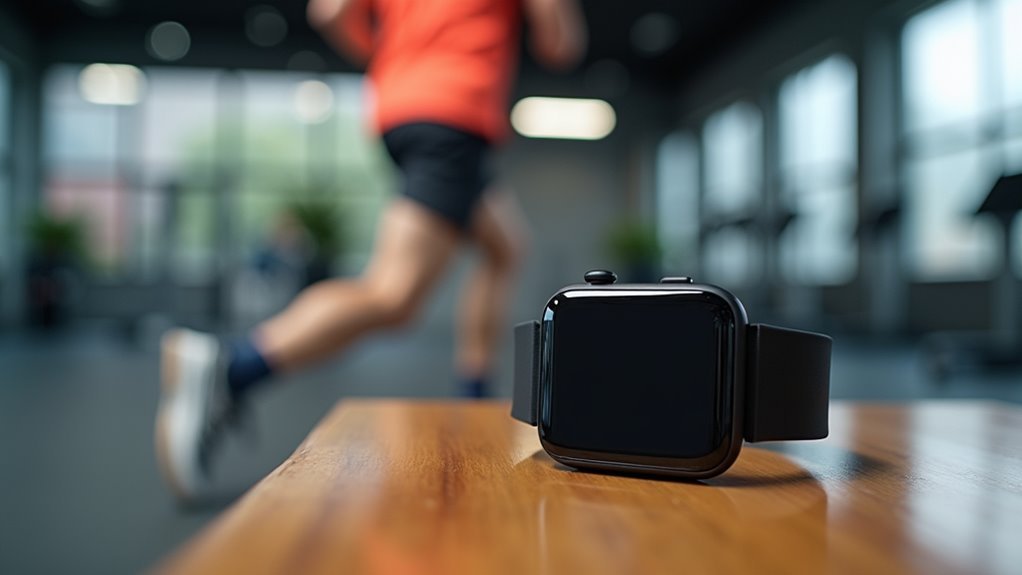
When your sport watch needs to verify your identity, combining heart rate monitoring with movement pattern analysis creates a powerful dual-layer authentication system that’s both secure and seamless.
Your heartbeat and movement patterns create an unbreakable authentication signature that no one else can replicate or steal.
Your unique heartbeat rhythm paired with your distinctive gait patterns creates an authentication signature that’s virtually impossible to replicate or steal.
This integration provides continuous identity validation throughout your workout without interrupting your performance.
You’ll benefit from passwordless access that eliminates vulnerabilities while maintaining robust security for your sensitive athletic data. The lightweight design ensures comfortable wear during extended training sessions without compromising authentication accuracy.
Key advantages you’ll experience:
- Peace of mind – Your biometric data stays secure through local processing without external transmission
- Effortless access – Authentication happens automatically without requiring any conscious action from you
- Unbreakable security – Dual biometric factors resist spoofing attempts and unauthorized device access
Real-Time Biometric Monitoring Preventing Unauthorized Device Access
Your sport watch continuously analyzes your unique biometric patterns to guarantee you’re the authorized user accessing the device.
It establishes secure connections through encrypted pairing methods that verify both your identity and the legitimacy of connected devices.
When someone else attempts to use your watch, real-time monitoring triggers anti-theft features that automatically lock the device and protect your personal data. Athletes must provide informed consent before their biometric information can be collected or processed by these monitoring systems.
Authentication Through Biometric Data
As biometric sport watches become increasingly sophisticated, they’re revolutionizing device security through continuous physiological monitoring that creates an invisible barrier against unauthorized access.
Your watch now uses your unique physiological signatures—heart rate patterns and skin bio-signals—as your personal key, eliminating the need for passwords or PIN codes.
Real-time biometric verification guarantees only you can access your personalized performance data. The system continuously validates your biometric data throughout use, instantly detecting anomalies that indicate potential spoofing attempts.
When signatures don’t match your registered profile, alerts trigger immediately, locking down sensitive functions. These wearable devices transmit encrypted biometric data wirelessly to secure cloud servers for enhanced protection.
Your biometric authentication delivers:
- Unbreakable security – Your body becomes the ultimate password
- Seamless access – No more fumbling with codes during workouts
- Complete privacy – Your performance data stays exclusively yours
Secure Device Pairing Methods
Beyond simple authentication, your biometric sport watch employs sophisticated pairing protocols that create an impenetrable connection between your device and smartphone.
These advanced systems utilize your unique biometric activities like gait patterns, heart rate, and muscle movements to generate shared encryption keys, ensuring only you can establish the connection.
Your watch leverages proximity-based technologies such as NFC and RFID, requiring close physical contact for pairing activation.
ECDH-based cryptography with elliptic curves like P-256 protects against eavesdropping attempts, while real-time biometric signal monitoring prevents unauthorized access during the pairing process.
Touch-to-access pairing uses your body to transmit keys securely, and ambient sound entropy generates additional security layers.
These methods achieve impressive 97.74% success rates while maintaining just 2.28% error rates, effectively preventing man-in-the-middle attacks. The continuous monitoring capabilities enable real-time data collection throughout training sessions, providing immediate security validation while maintaining seamless performance tracking.
Anti-Theft Protection Features
How effectively can your biometric sport watch protect itself from theft once it’s on your wrist? Your device becomes virtually useless to thieves through continuous biometric monitoring that verifies your identity using heartbeat patterns and skin texture recognition. This real-time authentication happens locally without network connections, making it impossible for unauthorized users to access your watch.
Your smartwatch employs multiple security layers that work together:
- Heartbeat verification – Your unique cardiac rhythm becomes an unbreakable password that can’t be stolen or replicated.
- Skin pattern detection – Advanced sensors read your distinctive skin texture and hair patterns for instant authentication.
- Tamper alerts – Immediate notifications when someone attempts unauthorized access or removal.
These features guarantee your valuable fitness data and personal information remain protected even if your watch is physically compromised. The device’s encryption protocols ensure that all biometric data remains secure and cannot be intercepted by unauthorized entities during any authentication process.
Secure Wireless Transmission of Athletic Performance Biometrics
When you’re transmitting biometric data from sport watches, securing that wireless communication becomes critical to protecting athletes’ sensitive health information.
You’ll need robust encryption protocols and secure data transmission methods to prevent unauthorized access during real-time monitoring.
Bluetooth Low Energy faces significant challenges in sports venues due to interference from multiple wireless devices, so you should consider high-gain antennas and specialized BLE chipsets to enhance signal quality.
High-gain antennas and specialized BLE chipsets can effectively combat wireless interference challenges that plague sports venue environments.
Proprietary transmission systems often provide better solutions for overcoming environmental interference and motion-related signal degradation.
You must implement strong data governance frameworks and guarantee compliance with regulations like GDPR for European athletes or Washington State’s extensive biometric data laws.
Continuous risk assessment and updated security protocols are essential for maintaining data integrity. Teams must also prepare for cyberattacks which are increasing in frequency and pose significant threats to biometric data systems.
AI-Powered Authentication Systems Safeguarding Competitive Advantages
While secure transmission protocols protect biometric data in transit, AI-powered authentication systems create an additional security layer that verifies athlete identity and safeguards competitive advantages.
You’ll benefit from multimodal biometric verification that combines heart rate, skin temperature, and movement signatures to prevent impersonation attempts. These intelligent systems continuously adapt to your unique physiological patterns, distinguishing between natural performance fluctuations and deliberate spoofing efforts.
AI algorithms monitor your data streams in real-time, flagging anomalies that indicate tampering or fraud. With predictive analytics achieving 76% accuracy in identifying potential risks, these systems can detect threats before they compromise your data integrity. This protection guarantees your hard-earned competitive insights remain secure while maintaining fair play standards.
- Your training data won’t be stolen by competitors
- False accusations of cheating can’t destroy your reputation
- Performance advantages you’ve worked years to develop stay protected
Frequently Asked Questions
How Accurate Are Biometric Sport Watches Compared to Medical-Grade Monitoring Equipment?
You’ll find biometric sport watches are moderately accurate for heart rate and steps but considerably less precise than medical equipment for blood pressure and caloric expenditure measurements, with errors reaching 100%.
What Happens to Stored Biometric Data When Athletes Switch Teams or Retire?
When you switch teams or retire, your biometric data’s fate depends on contracts and privacy laws. You’ll face unclear ownership rights, potential misuse risks, and limited deletion options without thorough legal frameworks protecting your sensitive information.
Can Environmental Factors Like Altitude or Temperature Affect Biometric Watch Accuracy?
Yes, altitude and temperature greatly affect your biometric watch’s accuracy. You’ll experience reading changes above 2,000 meters, while cold reduces circulation and heat causes signal noise, requiring recalibration for ideal performance.
How Long Do Biometric Sport Watch Batteries Last During Intensive Training Sessions?
You’ll get 15-24 hours of GPS battery life during intensive training sessions, though actual performance often falls shorter than advertised. Your recording intervals and enabled features directly impact how long you’ll train.
Are Biometric Sport Watches Waterproof Enough for Competitive Swimming and Diving?
You’ll find most biometric sport watches with 50m ratings work perfectly for competitive swimming. For diving, you’ll need 200m-rated models for recreational scuba, though professional diving requires specialized equipment beyond standard biometric watches.
In Summary
You’ve seen how biometric sport watches revolutionize athletic security through advanced authentication methods. You’ll protect your training data with heart rate variability and gait recognition while ensuring unauthorized users can’t access your device. You’re getting multi-layered protection that combines physiological markers with movement patterns. You’ll transmit your performance data securely and leverage AI-powered systems that safeguard your competitive edge in professional sports environments.

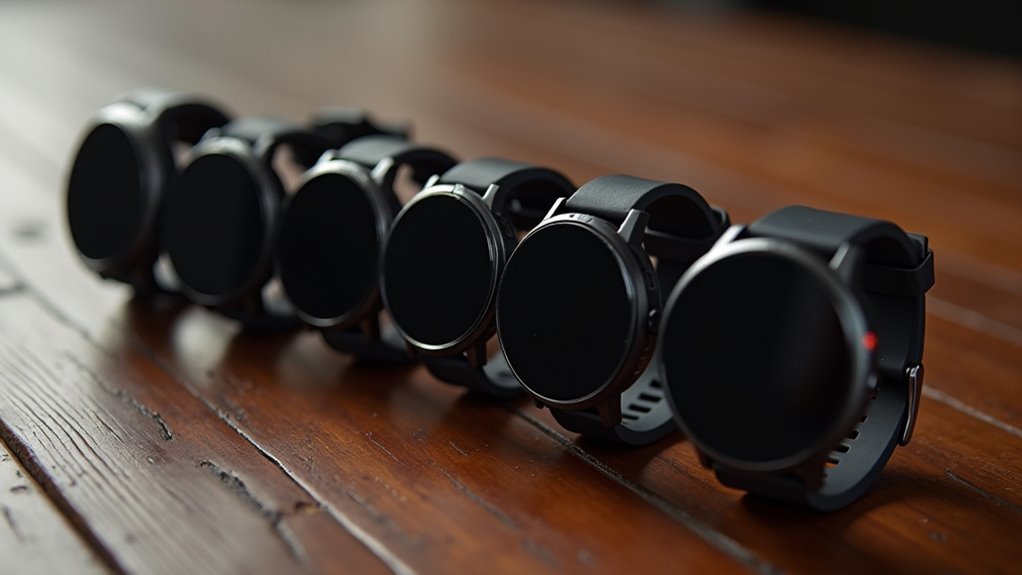
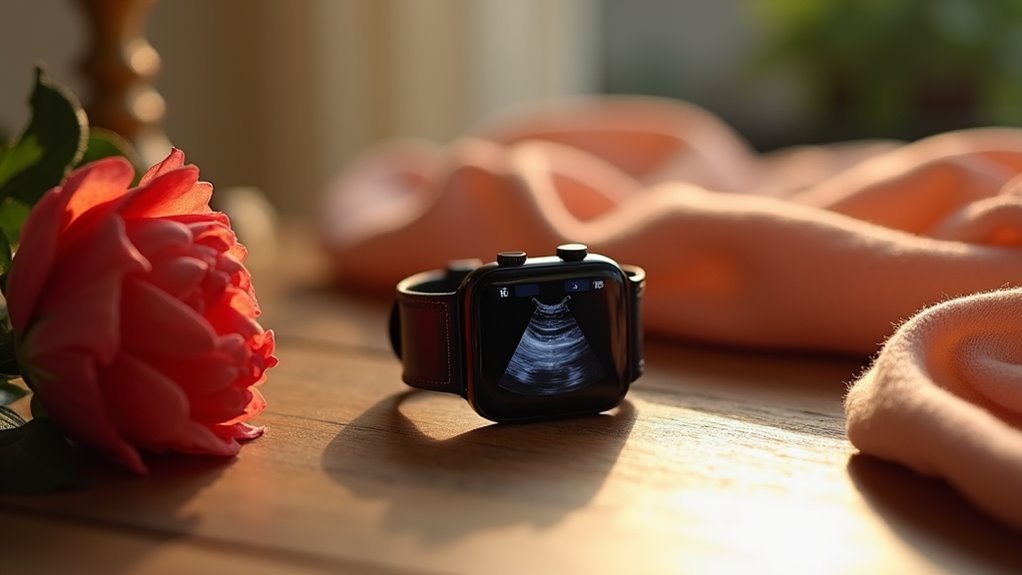
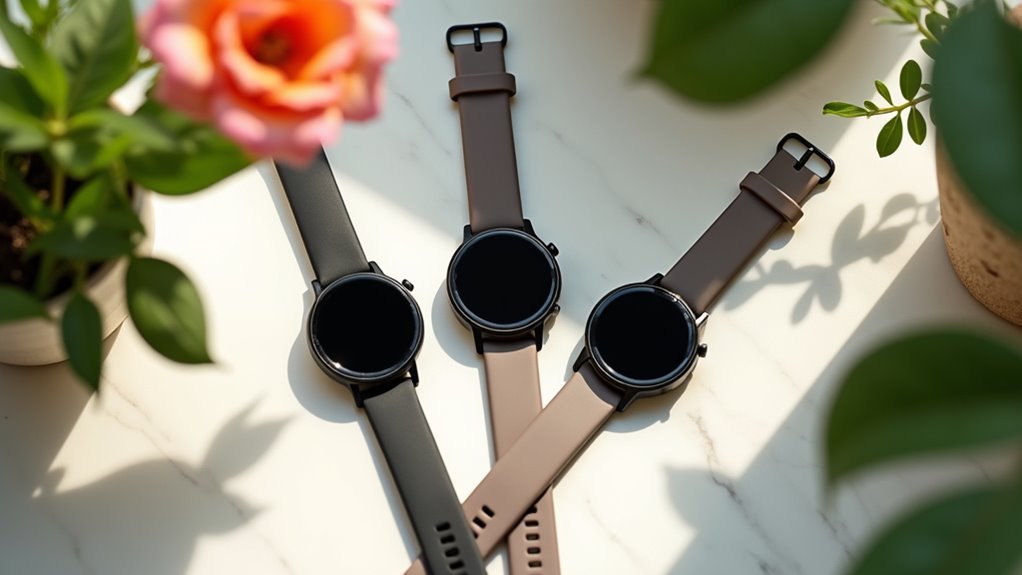

Leave a Reply